24+ Sample Separation Agreement Templates
-
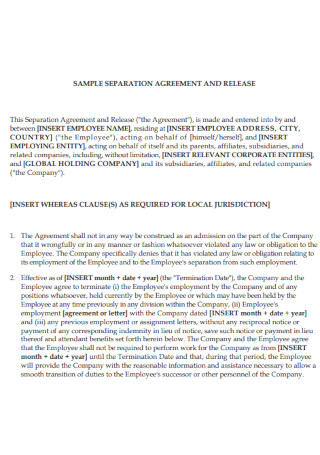
Sample Separation Agreement Template
download now -
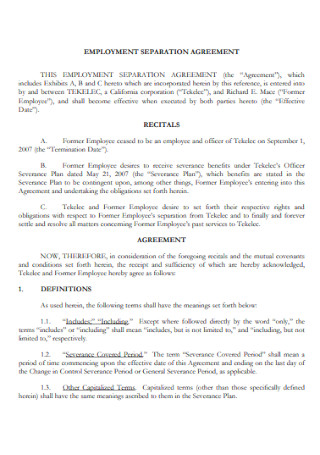
Employment Separation Agreement
download now -
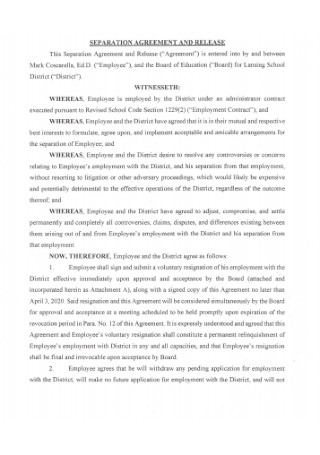
Separation Agreement and Release Template
download now -

General Separation Agreement Template
download now -
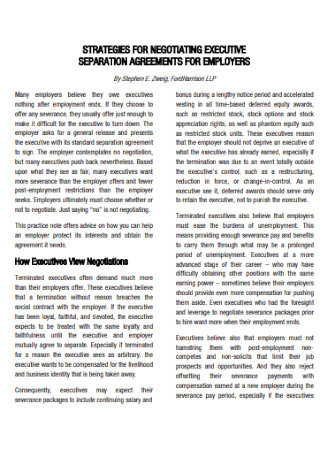
Separation Agreement for Employer
download now -
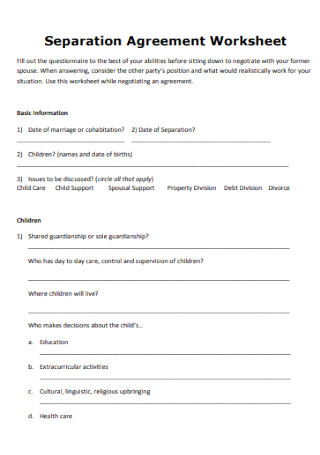
Separation Agreement Worksheet
download now -
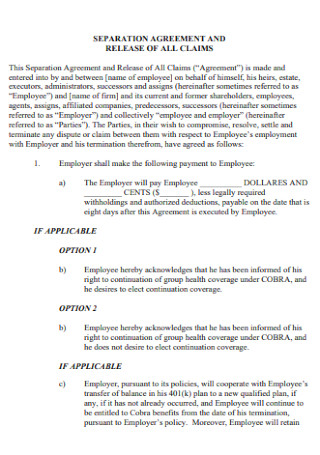
Claims Separation Agreement Template
download now -
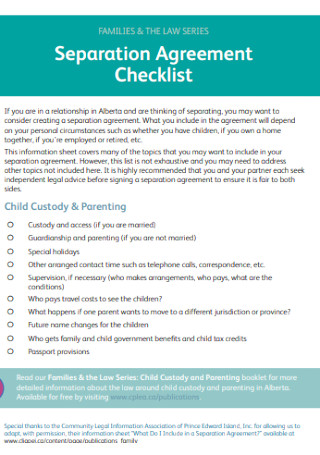
Separation Agreement Checklist
download now -
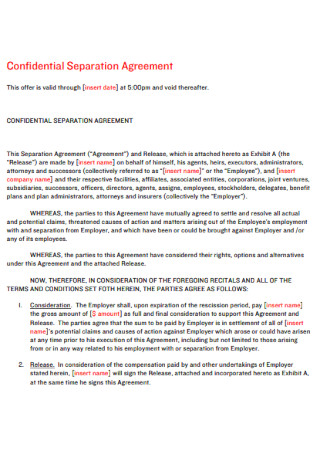
Confidential Separation Agreement
download now -
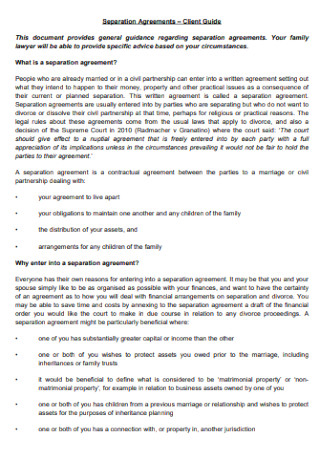
Client Separation Agreement
download now -
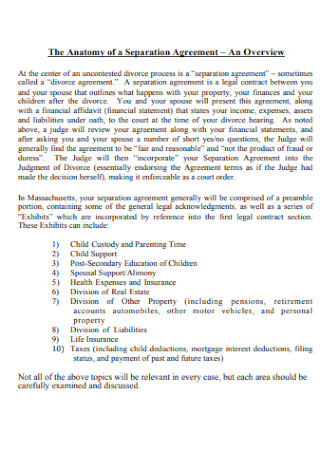
Anatomy of a Separation Agreement
download now -
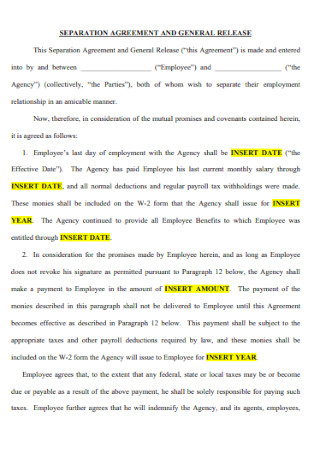
Basic Separation Agreement Template
download now -

Standard Separation Agreement
download now -
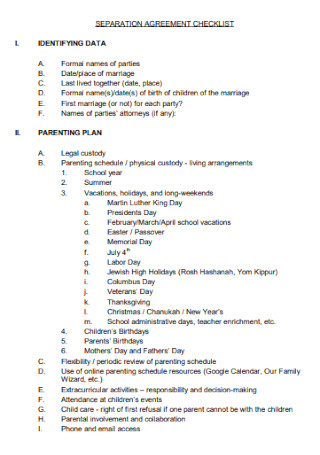
Sample Separation Agreement Checklist
download now -

Separation and Release Agreement Template
download now -
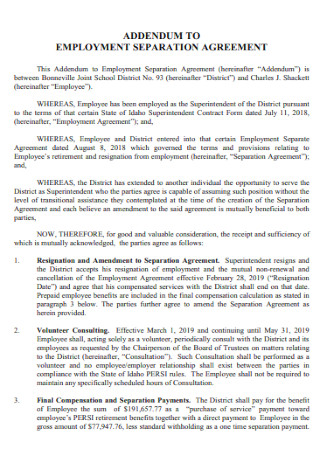
Addendum to Employment Separation
download now -
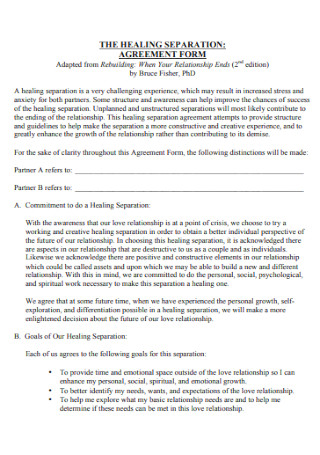
Separation Agreement Form
download now -
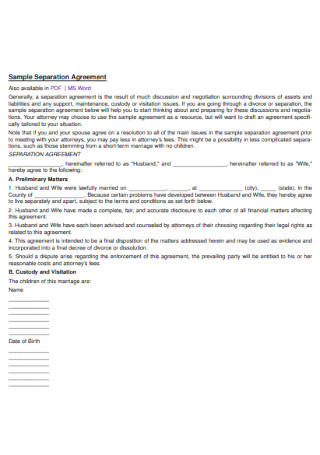
Sample Leagal Separation Agreement
download now -
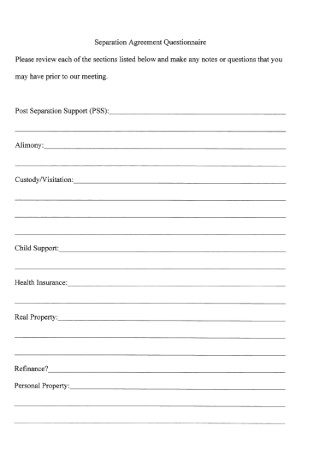
Separation Agreement Questionnaire
download now -

Voluntary Separation Agreement
download now -
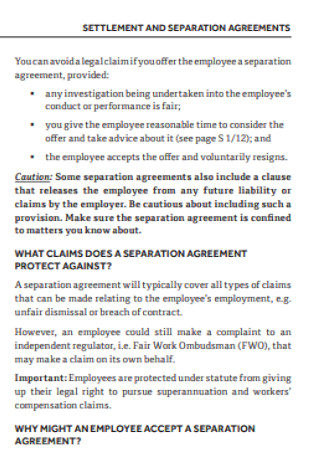
Settlement and Separation Agreement
download now -
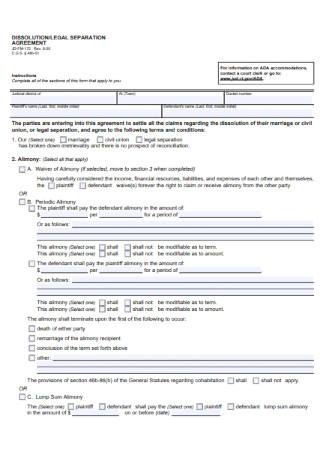
Legal Separatiion Agreement Template
download now -
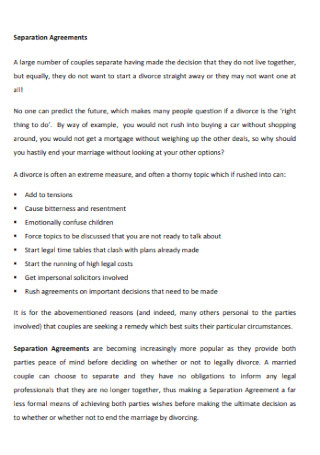
Formal Separation Agreement Template
download now -
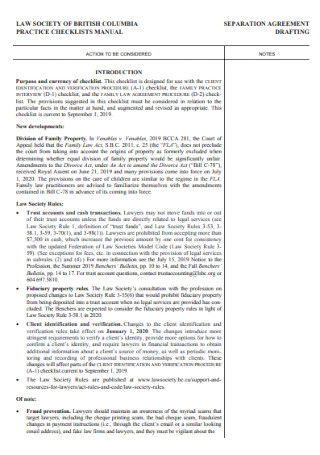
Simple Separation Agreement Template
download now -

No-Divorce-Today Separation Agreement
download now
FREE Separation Agreement s to Download
24+ Sample Separation Agreement Templates
What Is a Separation Agreement?
The Elements of a Separation Agreement
How to Draft a Separation Agreement
FAQs
What is another name for separation agreement?
Can you file for unemployment after signing a separation agreement?
Can the employee negotiate in a separation agreement?
What Is a Separation Agreement?
Do you still remember your first day of employment? Aside from the introduction and training program, you are expected to sign a detailed business agreement or contract. That signed form outlines and explains all the expected stipulations to comply at work. And during an employee’s termination, there are stipulations to follow too. Such stipulations related to termination, the release of claims, and severance fall under the employee separation agreement. So, it is a document outlining the terms of ending the working relationship between an employee and an employer. Hence, ex-employees waive their right in suing the company for any reason afterward.
A report confirmed that approximately 40.1 million Americans quit their jobs, and 21.9 million were laid off in 2018.
According to The Guardian, more than 20 million workers in the US lost their jobs in April 2020.
Moreover, Inc. reported that being fired doesn’t end your career as 91% of workers bounce back.
Separation Agreement: Why Is It Important?
Certain businesses undergo litigation when ex-workers sue them for wrongful termination or severance pay. But an employee who has already signed a separation agreement cannot do so. Thus, business owners feel safer when no binding agreement or claim is left between the ex-employee and the company. Aside from that, the form is vital, so the terminated employee cannot exploit any confidential information about the enterprise. Maybe top-secret details are shared by one ex-worker to a business competitor. Thus, an employer won’t let that happen.
On the other party’s side, separation agreements are helpful too. When an enterprise goes under fire for scandals, the ex-employee cannot be blamed already. Thanks to the document, it confirms how the person who signed is no longer tied to the company. Also, the process is fair since the terminated worker’s signature is required. With that, it means he or she will be informed about its details before signing. Nevertheless, the said agreement observes a mutual closure between parties to process termination legally and respectfully.
Who Creates the Separation Agreement?
Although employment separation agreements are part of common law, plenty of business owners do not consider it a common practice. However, professionals who want to be sure and protected prepare this document in a detailed letter form. So who makes the form? The employer, of course. The agreement protects his or her company in the first place. And such documents will only be sent to employees who are about to be fired or terminated.
The Elements of a Separation Agreement
Since you now know the separation agreement’s definition and importance, delve further in knowing what the inclusions are. Inside the sheet, there are common elements to recognize and each of which makes up a proper separation agreement. And these elements are the following:
How to Draft a Separation Agreement
Now you know the elements or inclusions of the separation agreement. So how about the process of making one? Creating the agreement is not that difficult when you familiarize the basic steps to perfect it. And with available templates to download and edit, it even becomes easier to manage. Without further ado, here are the steps on how to draft a separation agreement:
Step 1: Open with an Introduction
First things first, open your separation agreement document with an introductory statement. By that, introduce what the form is about. Indeed, putting the label “Separation Agreement” speaks itself. But be sure to add further information that answers the essential questions. Who are the parties? And when does the agreement take effect? Remember that the introduction is like a brief description of the document, so it must be highlighted.
Step 2: Organize the Elements into Clauses
Next, insert the essential elements discussed before. From the separation details to others, note those down. Although you write them one by one, do not just list them down. Divide the elements into groups or clauses. With this, it means you group the elements according to the name of their elements. For example, you jot down the full non-disclosure terms under the “Confidentiality” clause while you put the payout details under the “Severance Package” section. Remember that grouping is not for naught since it aims to keep the information well-arranged.
Step 3: Stipulate the Terms
Writing the legal terms and applicable laws will be one of the challenging parts of the agreement. Yet, it is very crucial. Never forget to research on the labor laws in your state to avoid disputes. For advice, talk with a lawyer to know what’s right or wrong as well. Bear in mind that the legal stipulations’ absence will easily have parties to cause a breach of contract. Moreover, the form might be informal to only instruct about the waiver of claims, yet no governing laws were even mentioned. Keep it professional by stating the appropriate terms.
Step 4: Be Concise
When you slowly input all the terms and elements in the sheet, review your messages’ conciseness too. Maybe the whole document is too long or wordy because of adding lots of unnecessary words. Be brief, especially when it is more understandable that way. If you add many flowery or technical terms to intimidate employees, then that is poor. That approach only lessens your chances of having them sign the form. Let them understand the message clearly by being concise.
Step 5: Clarify if Necessary
There is a fine line between conciseness and broadness. Just because your words or sentences are short, it does not mean it is brief. Maybe your statement is too broad that it lessens the capability of employees to understand the gist quickly. An example is saying, “You are terminated this Friday.” Friday could mean next Friday or this coming Friday. And also, terminated for what? A better statement would be, “Your termination of employment is effective duly on Friday, 4th of July, 2020.” Furthermore, add clarifications to statements that need explanation. For example, incorporate the definition of certain technical words to help the public understand.
Step 6: Require a Signature
Finally, conduct a final evaluation if the document still needs some improvement. Does it possess all the essential elements of a separation agreement? And does it answer the significant questions about the form? If yes, then have it signed by parties. Keep the signature line visible because getting the initials will begin the agreement’s confirmation. And remember, having errors on the sheet yet parties already signed may lead to conflicts. Do not merely give out documents to sign if everything in its content hasn’t been corrected yet.
FAQs
What is another name for separation agreement?
Employee separation agreements come in various names, and you better not mistake them for divorce or marital separation agreements as they are extremely different. In business, a separation agreement can be referred to as termination, severance, and release of claims for employment agreement.
Can you file for unemployment after signing a separation agreement?
Yes. Separation, severance, or termination agreements do not mean that ex-employees cannot file for their unemployment benefits. In fact, it is discouraged to have statements in the agreement that states how the employee is banned from filing. Filing for unemployment is still a statutory right that needs to be respected.
Can the employee negotiate in a separation agreement?
Yes, a worker can still negotiate with the employer before signing the separation agreement. Once terminated, there is still time to discuss the severance package and other factors. Thus, the employer may decide to change the deal until the employee signs. However, no changes apply if signatures were already placed between both parties.
Who knew Samuel Lover’s quote, “Better to be safe than sorry,” makes sense until now? As employees come and go in business, facing litigation and complaints can happen anytime too. There must be a way for parties to know what to expect from each other while in separate terms. And most importantly, it should produce a win-win situation. So to have an amicable end on the partnership between the manager and a worker, it is safe to include a separation agreement in the termination process.
